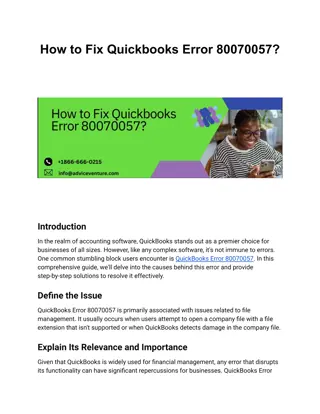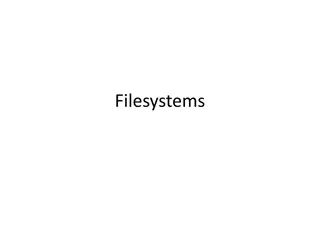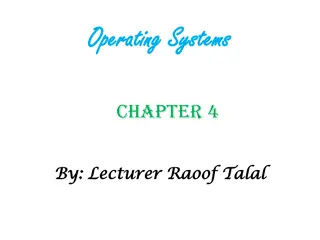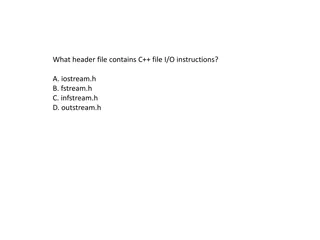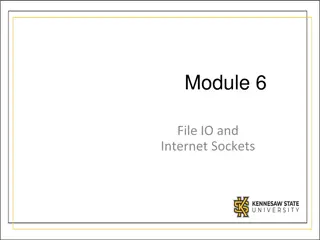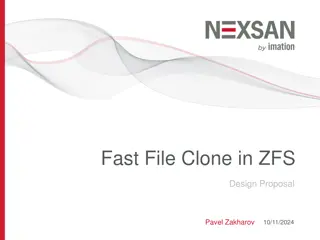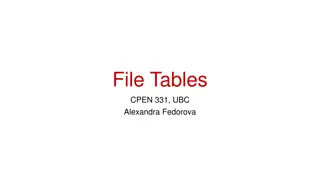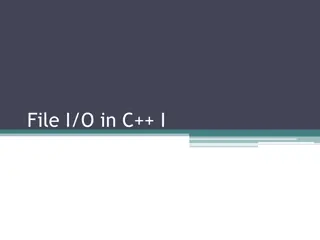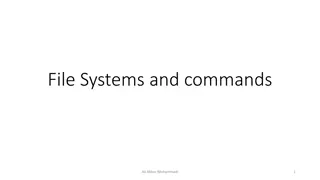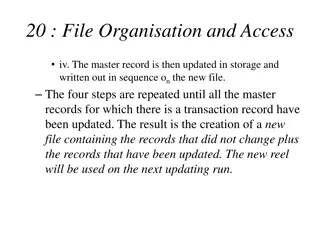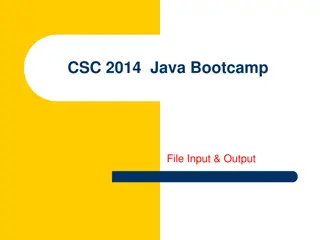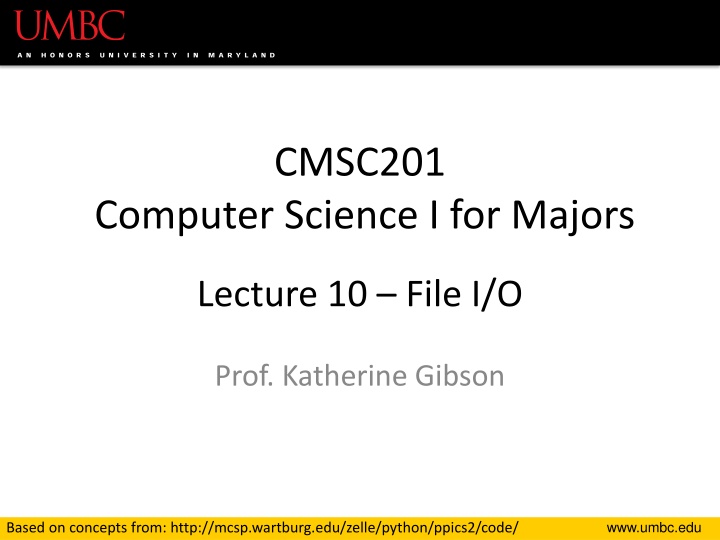
Escape Sequences in Python: Basics and Usage
Explore the concept of escape sequences in Python, including their importance, usage, and examples. Learn how to handle special characters like quotes and understand the role of backslashes in escaping characters to enhance your coding skills effectively.
Download Presentation

Please find below an Image/Link to download the presentation.
The content on the website is provided AS IS for your information and personal use only. It may not be sold, licensed, or shared on other websites without obtaining consent from the author. If you encounter any issues during the download, it is possible that the publisher has removed the file from their server.
You are allowed to download the files provided on this website for personal or commercial use, subject to the condition that they are used lawfully. All files are the property of their respective owners.
The content on the website is provided AS IS for your information and personal use only. It may not be sold, licensed, or shared on other websites without obtaining consent from the author.
E N D
Presentation Transcript
CMSC201 Computer Science I for Majors Lecture 10 File I/O Prof. Katherine Gibson www.umbc.edu Based on concepts from: http://mcsp.wartburg.edu/zelle/python/ppics2/code/
Last Class We Covered Using while loops Syntax Using them for interactive loops Two different ways to mutate a list append() and remove() Nested loops Two-dimensional lists (lists of lists) 2 www.umbc.edu
Any Questions from Last Time? www.umbc.edu
Todays Objectives To learn about escape sequences Why we need them How to use them To be able to Open a file Read in its data 4 www.umbc.edu
Escape Sequences www.umbc.edu
Misbehaving print() Function There are times when the print() function doesn t output exactly what we want >>> print("I am 5 feet, 4 inches") I am 5 feet, 4 inches >>> print("I am 5'4"") File "<stdin>", line 1 print("I am 5'4"") ^ SyntaxError: EOL while scanning string literal 6 www.umbc.edu http://learnpythonthehardway.org/book/ex10.html
Special Characters Just like Python has special keywords for, int, True, etc. It also has special characters single quote ('), double quote ("), etc. 7 www.umbc.edu
Backslash: Escape Sequences The backslash character (\) is used to escape a special character in Python Tells Python not to treat it as special The backslash character goes in front of the character we want to escape >>> print("I am 5'4\"") I am 5'4" 8 www.umbc.edu
Using Escape Sequences There are three ways to solve the problem of printing out our height using quotes >>> print("I am 5'4\"") I am 5'4" >>> print('I am 5\'4"') I am 5'4" >>> print("I am 5\'4\"") I am 5'4" 9 www.umbc.edu
Using Escape Sequences There are three ways to solve the problem of printing out our height using quotes >>> print("I am 5'4\"") I am 5'4 >>> print('I am 5\'4"') I am 5'4" >>> print("I am 5\'4\"") I am 5'4" escape double quotes (using " for the string) escape single quotes (using ' for the string) escape both single and double quotes (works for both ' and ") 10 www.umbc.edu
Common Escape Sequences Escape Sequence Purpose \' \" \\ \t \n """ """ is not really an escape sequence, but is useful for printing quotes Print a single quote Print a double quote Print a backslash Print a tab Print a new line ( enter ) Allows multiple lines of text 11http://learnpythonthehardway.org/book/ex10.html www.umbc.edu
Escape Sequences Example tabby_cat = "\tI'm tabbed in." print(tabby_cat) I'm tabbed in. \t adds a tab persian_cat = "I'm split\non a line." print(persian_cat) I'm split on a line. \n adds a newline backslash_cat = "I'm \\ a \\ cat." print(backslash_cat) I'm \ a \ cat. \\ adds a single backslash 12http://learnpythonthehardway.org/book/ex10.html www.umbc.edu
Escape Sequences Example fat_cat = """ I'll do a list: \t* Cat food \t* Fishies \t* Catnip\n\t* Grass """ print(fat_cat) I'll do a list: * Cat food * Fishies * Catnip * Grass 13http://learnpythonthehardway.org/book/ex10.html www.umbc.edu
Escape Sequences Example fat_cat = """ I'll do a list: \t* Cat food \t* Fishies \t* Catnip\n\t* Grass """ print(fat_cat) when using triple quotes ("""), the times you hit enter inside the string will print as newlines I'll do a list: * Cat food * Fishies * Catnip * Grass 14http://learnpythonthehardway.org/book/ex10.html www.umbc.edu
Escape Sequences Example fat_cat = """ I'll do a list: \t* Cat food \t* Fishies \t* Catnip\n\t* Grass """ >>> print(fat_cat) \t puts in a tab \n adds a newline I'll do a list: * Cat food * Fishies * Catnip * Grass 15http://learnpythonthehardway.org/book/ex10.html www.umbc.edu
How Python Handles Escape Sequences Escape sequences look like two characters to us Python treats them as a single character >>> example1 = "dog\n" >>> example2 = "\tcat" 0 1 2 3 0 1 2 3 d o g \n \t c a t 16 www.umbc.edu
File Input/Output www.umbc.edu
Why Use Files? Until now, the Python programs you've been writing are pretty simple for input/output User types input at the keyboard Results (output) are displayed in the console This is fine for short and simple input But what if we want to average 50 numbers, and mess up when entering the 37th one? Start all over??? 18 www.umbc.edu
What is File I/O? One solution is to read the information in from a file on your computer You could even write information to a file This process is called File I/O "I/O" stands for "input/output Python has built-in functions that make this easy 19https://www.codecademy.com/courses/python-intermediate-en-OGNHh/0/1 www.umbc.edu
File I/O Example Usage Read in a file using a word processor File opened Contents read into memory (RAM) File closed IMPORTANT: Changes to the file are made to the copy stored in memory, not the original file on the disk 20 www.umbc.edu
File I/O Example Usage Write a file using a word processor (Saving a word processing file) Original file on the disk is reopened in a mode that will allow writing This actually erases the old contents! Copy the version of the document stored in memory to the original file on disk File is closed 21 www.umbc.edu
File Processing In order to do interesting things with files, we need to be able to perform certain operations: Associate an external file with a program object Opening the file Manipulate the file object Reading from or writing to the file object Close the file Making sure the object and file match 22 www.umbc.edu
Syntax: Opening a File www.umbc.edu
Syntax for open() Function myFile = open(FILE_NAME [, ACCESS_MODE][, BUFFERING]) FILE_NAME This argument is a string the contains the name of the file you want to access "input.txt" "numbers.dat" "roster.txt" 24 www.umbc.edu
Syntax for open() Function myFile = open(FILE_NAME [, ACCESS_MODE][, BUFFERING]) ACCESS_MODE (optional argument) This argument is a string that determines which of the modes the file is to be opened in "r" (open for reading) "w" (open for writing) "a" (open for appending) 25 www.umbc.edu
Syntax for open() Function myFile = open(FILE_NAME [, ACCESS_MODE][, BUFFERING]) BUFFERING (optional argument) This argument is an integer that specifies to desired buffer size for the file 0 (unbuffered) 1 (line buffered) >1 (buffer of approximately that size in bytes) we won t be using buffering much (if at all) in this class 26 www.umbc.edu
Examples of Using open() In general, we will use commands like: testFile = open("scores.txt") dataIn = open("old_stats.dat") dataOut = open("stats.dat", "w") We will ignore the optional buffering argument scores.txt 2.5 8.1 7.6 3.2 3.2 3.0 11.6 6.5 2.7 12.4 8.0 8.0 8.0 8.0 7.5 an example input file 27 www.umbc.edu
File Processing: Reading www.umbc.edu
Using File Objects to Read Files myFile = open("myStuff.txt") This line of code does three things: 1. Opens the file myStuff.txt 2. In the reading mode (which is the default) 3. Assigns the opened file to the variable myFile myFile is a variable of type file object Once the file is open, we can start reading it 29 www.umbc.edu
Three Ways to Read a File There are three different ways to read in a file: 1. Read the whole file in as one big long string myFile.read() 2. Read the file in one line at a time myFile.readline() 3. Read the file in as a list of strings (each is one line) myFile.readlines() 30 www.umbc.edu
Entire Contents into One String >>> info = open("hours.txt") >>> wholeThing = info.read() >>> wholeThing '123 Susan 12.5 8.1 7.6 3.2\n456 Brad 4.0 11.6 6.5 2.7 12\n789 Jenn 8.0 8.0 8.0 8.0 7.5\n' it s literally one giant string! our input file hours.txt 123 Susan 12.5 8.1 7.6 3.2 456 Brad 4.0 11.6 6.5 2.7 12 789 Jenn 8.0 8.0 8.0 8.0 7.5 31 www.umbc.edu https://courses.cs.washington.edu/courses/cse142/11au/python/06-files.ppt
Entire Contents into One String >>> info = open("hours.txt") >>> wholeThing = info.read() >>> wholeThing '123 Susan 12.5 8.1 7.6 3.2\n456 Brad 4.0 11.6 6.5 2.7 12\n789 Jenn 8.0 8.0 8.0 8.0 7.5\n' it s literally one giant string! our input file notice that escape sequence (\n) is being printed, instead of the text starting on a new line hours.txt 123 Susan 12.5 8.1 7.6 3.2 456 Brad 4.0 11.6 6.5 2.7 12 789 Jenn 8.0 8.0 8.0 8.0 7.5 32 www.umbc.edu https://courses.cs.washington.edu/courses/cse142/11au/python/06-files.ppt
One Line at a Time >>> info = open("hours.txt") >>> lineOne = info.readline() >>> lineOne '123 Susan 12.5 8.1 7.6 3.2\n' >>> lineTwo = info.readline() '456 Brad 4.0 11.6 6.5 2.7 12\n' there s actually an easier way to do this can you guess what it is? (we ll show you soon) our input file hours.txt 123 Susan 12.5 8.1 7.6 3.2 456 Brad 4.0 11.6 6.5 2.7 12 789 Jenn 8.0 8.0 8.0 8.0 7.5 33 www.umbc.edu https://courses.cs.washington.edu/courses/cse142/11au/python/06-files.ppt
As a List of Strings >>> info = open("hours.txt") >>> listOfLines = info.readlines() >>> listOfLines ['123 Susan 12.5 8.1 7.6 3.2\n', '456 Brad 4.0 11.6 6.5 2.7 12\n', '789 Jenn 8.0 8.0 8.0 8.0 7.5\n'] our input file hours.txt 123 Susan 12.5 8.1 7.6 3.2 456 Brad 4.0 11.6 6.5 2.7 12 789 Jenn 8.0 8.0 8.0 8.0 7.5 34 www.umbc.edu https://courses.cs.washington.edu/courses/cse142/11au/python/06-files.ppt
Using for Loops to Read in Files Remember, for loops are great for iterating With a list, the forloop iterates over Each element of the list (in order) Using a range(), the forloop iterates over Each number generated by the range (in order) And with a file, the forloop iterates over Each line of the file (in order) 35 www.umbc.edu
A Better Way to Read One Line at a Time Instead of reading them manually, use a for loop to iterate through the file line by line >>> info = open("hours.txt") >>> for eachLine in info: ... print(eachLine) ... 123 Susan 12.5 8.1 7.6 3.2 456 Brad 4.0 11.6 6.5 2.7 12 789 Jenn 8.0 8.0 8.0 8.0 7.5 36 www.umbc.edu
A Better Way to Read One Line at a Time Instead of reading them manually, use a for loop to iterate through the file line by line >>> info = open("hours.txt") >>> for eachLine in info: ... print(eachLine) ... 123 Susan 12.5 8.1 7.6 3.2 why are there all these empty lines??? now that we re calling print(), the \n is printing out as a new line 456 Brad 4.0 11.6 6.5 2.7 12 789 Jenn 8.0 8.0 8.0 8.0 7.5 37 www.umbc.edu
Whitespace www.umbc.edu
Whitespace Whitespace is any blank character, that represents space between other characters For example: tabs, newlines, and spaces "\t" "\n" " " When we read in a file, we can get whitespace Sometimes, we don t want to keep it 39 www.umbc.edu
Removing the Newline from the End To remove the escaped newline sequence (\n) from a string we read in, we can use slicing myString = myString[:-1] 0 1 2 3 d -4 o -3 myString g \n -2 -1 40 www.umbc.edu
Removing the Newline from the End To remove the escaped newline sequence (\n) from a string we read in, we can use slicing myString = myString[:-1] 0 1 2 3 don t remove anything from the beginning d -4 o -3 myString g \n -2 -1 just remove the very last character 41 www.umbc.edu
Removing Whitespace To remove all whitespace from the start and end of a string, we can use strip() spacedOut = spacedOut.strip() \t c a t s \n spacedOut 42 www.umbc.edu
Removing Whitespace To remove all whitespace from the start and end of a string, we can use strip() spacedOut = spacedOut.strip() \t c a t s \n spacedOut 43 www.umbc.edu
Removing Whitespace To remove all whitespace from the start and end of a string, we can use strip() spacedOut = spacedOut.strip() notice that strip() does not remove interior spacing \t c a t s \n spacedOut 44 www.umbc.edu
Miscellaneous (and Exercises!) www.umbc.edu
Getting a Filename from a User Instead of putting the filename straight in the code, we can ask the user for the filename Save their response in a variable, and call the open() function with it # printfile.py # Prints a file to the screen. def main(): fname = input("Enter filename: ") infile = open(fname, 'r') data = infile.read() print(data) main() 46 www.umbc.edu
Exercise: Jabberwocky Write a program that goes through a file and reports the longest line in the file caroll.txt Example Input File: Beware the Jabberwock, my son, the jaws that bite, the claws that catch, Beware the JubJub bird and shun the frumious bandersnatch. Example Output: >>>longest.py longest line = 42 characters the jaws that bite, the claws that catch, 47 www.umbc.edu
Jabberwocky Solution def main(): input = open("carroll.txt") longest = "" for line in input: if len(line) > len(longest): longest = line print("Longest line =", len(longest)) print(longest) main() 48 www.umbc.edu
Announcements (Pre) Lab 5 has been released on Blackboard Future ones will be available the weekend prior Homework 4 is out Due by Tuesday (Oct 6th) at 8:59:59 PM Homework 1 re-grade and re-submit petitions must be made to your TA before Friday @ 3 PM 49 www.umbc.edu

